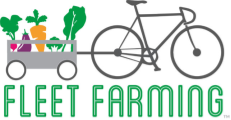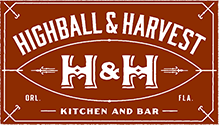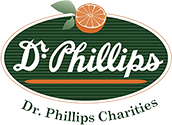Pest Management For Florida Gardens
In a farming system, such as Fleet Farming, multiple plots are functioning all year round. This highlights the importance of maintaining records and having accurate records for a variety of practices will guarantee that any IPM program or growing schedule will operate smoothly. Fleet Farming can show you the best Pest Management For Florida Gardens.
Integrated Pest Management
An Integrated Pest Management (IPM) Program is an important component of any system where pests can be an issue: home, garden, farm, warehouse, school, etc. Having a plan of action with detailed schedules as well as protocols can save from damages that could accrue from pest damage. Outlined below is a guidebook explaining what an IPM program is, how to incorporate it into our farming system, and the importance of keeping records for the future of the farmlettes.
In a farming system, such as Fleet Farming, multiple plots are functioning all year round. This highlights the importance of maintaining records and having accurate records for a variety of practices will guarantee that any IPM program or growing schedule will operate smoothly. The practices and guidelines on this website will aid all farmers in maintaining healthy and functional plots, whatever the growing season.
Crop Pests
The arthropods listed below are comprised of pests that have been found feeding on our crops. Feeding injury is variable depending on the pest in question. In most cases, we have pests that feed by piercing and sucking out plant juices or chewers that consume foliage or fruits. It is also important to properly identify what is feeding in your garden before you attempt a treatment protocol. Understanding a few terms will help in understanding this guide.
- Hemimetabolous – this means ‘incomplete metamorphosis’. In other words, the nymph looks like an adult. But it is variable because coloring could be different, and size is apparent.
- Holometabolous – ‘complete metamorphosis’ this just means that the adult and larva look very different-think caterpillar and butterfly, same insect different life stage.
Why is this important? Again identification, if the insect is holometabolous the larval stage is feeding not the adult. If its hemimetabolous, adult and nymph may be feeding.
*Please read the back of all pest deterrent chemicals and apply as directed to avoid harming important insects such as bees*

Life Cycle: hemimetabolous; egg, nymph, adult
Host Plants: too numerous to list; be mindful of plants with new growth, aphids prefer tender new growth; on our plots, they like the okra, Cucurbits and Brassicas, weakened plants and any plants with new growth
Assessment: a handful of aphids on a plant is something to monitor. Once 3 or more plants are hosting aphids treatment may be necessary. Look for predators.
Control Methods:
Mechanical: high-velocity water spray;
Cultural Control: destruction of infested plant material; reflective mulches
Chemical control: while chemical control is not recommended, there are some that can be effective
- Neem
- Pyrethrin
Biological: ladybugs beetles, lacewings, Braconid wasps, Syrphid flies (Hoverflies)
Hesitate to spray if there are large numbers of any beneficials around, they will usually keep aphids under control.
If ants are present, consider controlling ants because they will prevent predators from attacking the aphids

Life Cycle: hemimetabolous; nymphs do not fly; egg to an adult about 30 days
Host Plants: normally seen on peppers, collards, cucurbits, wide variety of ornamentals and vegetables; can be a major problem in the greenhouses
Assessment: Similar to aphids. Watch for nymphs which are easier to control
Control Methods:
Prevent build-up of large populations, remove infested leaves, look at the underside of leaves for nymphs and eggs. Natural predators will control small populations
Mechanical: remove infested leaves; high-pressure water spray, yellow sticky traps for monitoring and control
Chemical: while chemical control is not recommended, there is one that can be effective
- Neem is effective for control unless the population is high
Be aware of issues in the greenhouse because they move most effectively from plant material to plant material.

Life Cycle: hemimetabolous; variable 2-6 generations per year; 100-200+ eggs possible per female
Host Plants: many hosts; variable depending on species; can be associated with sooty mold; indoor plants/greenhouse susceptible to mealy bug infestations
Assessment: treat these similar to aphids, they don’t move much which can make them easier to manage
Control Methods:
Cultural: inspect new plants brought into a new growing area; mealy bugs move slow and don’t fly so they usually build up from another plant. Healthy plants can sustain damage; control nitrogen fertilization-rapid growth promotes mealy bugs and aphids
Chemical control: while chemical control is not recommended, there are some that can be effective
- Neem oil spray
- Isopropyl alcohol spot treatments
Biocontrol: recommended that unless numbers are severe, natural enemies will keep numbers low enough. Can be augmented with the Mealybug destroyer, Cryptolaemus montrouzieri, which is a specialist, and can be ordered for release.

Life Cycle: 50-80 days per generation; Hemimetabolous overwinter as adults
Host Plants: Cruciferous plants-cabbage, kale, Brussel sprouts, turnips; will attack tomatoes, eggplant, peppers, okra
Assessment: Once adults are present, watch for eggs. When eggs appear hand remove or wait and spray nymphs. Best to control early.
Control Methods:
Cultural: sanitation–adults will hide in crop residues and under decaying leaves; remove dead and dying plant debris from plots
Mechanical: hand remove adults, nymphs and eggs
Chemical: Neem – we can spray with neem when nymphs are present; scouting is essential to catch them early
- Pyrethrin spray
- Horticultural oils
Eggs can be mechanically destroyed by crushing; this applies to most insect eggs

Life Cycle: hemimetabolous – egg, nymph, adult; many different species in Florida, all can be somewhat destructive, monitor numbers
Host Plants: varies; tend to see them on solanaceous plants (peppers and tomatoes), squash, cucurbits
Assessment: treat when they appear; numbers can get out of hand when left unattended
Control Methods:
Mechanical: when numbers are low, hand remove
Cultural: sanitation, weed removal, trap crops (sunflower)
Chemical: while chemical control is not recommended, there is one that can be effective; pollinator warning*
- Pyrethrin

Life Cycle: hemimetabolous; 3 stage – egg, nymph, adult. Multiple generations per year; always active in Florida
Host Plants: they have been seen feeding on almost all of our plants. Swiss chard, beans, radishes, greens
Assessment: treat as you would aphids but don’t let numbers get too high because damage will get out of control
Control Methods:
Chemical: Neem Oil – multiple applications; eggs are laid inside plant stems so they are protected.

Life Cycle: multiple generations per year; 18-25 days from egg to adult; holometabolous
Host Plants: wide variety; crucifers; kale, collards, turnips, peas, peppers, squash
Assessment: with most caterpillars, once a few are present treatment may be necessary, watch for predators
Control Methods:
Mechanical: removal of caterpillars and pupae, effective with low numbers
Cultural: row covers to prevent egg-laying
Chemical: while chemical control is not recommended, there are some that can be effective; pollinator warning*
- Neem
- BT Toxin

Life Cycle: three generations per year; can complete lifecycle in 30 days; holometabolous; larval phase last 8-14 days
Host Plants: Mainly Cucurbits, cucumbers and squashes, watermelon possible
Assessment: treat as soon as they are spotted; they will defoliate a plant or destroy fruit if you wait
Control Methods: scout to detect early
Mechanical: row covers and trap crops (summer squash)
Chemical: Apply in the evening when caterpillars feed
- BT Toxin
- Spinosad
Biocontrol: entomopathogenic nematodes have some effect

Life Cycle: holometabolous; possibly 8-12 generations here in Florida
Host Plants: cruciferous crops; common on kale and collard greens
Assessment: monitor these, their numbers can get out of hand quickly; once a few or more plants have them, treat accordingly
Control Methods:
Cultural: intercropping can help to reduce numbers
Chemical: while chemical control is not recommended, there are some that can be effective
- BT Toxin
- Spinosad
Biological: a number of wasps in couple different families will parasitize the larvae and pupae

Life Cycle: holometabolous; 15-20 days for larval stages; 30 days total;
Host Plants: legumes – cowpea, lima bean, peas, snap peas and soybeans; plants can tolerate 30% of damage; equivalent to 4 larvae per plant feeding till pupation
Assessment: usually these won’t need a treatment
Control Methods: usually not an issue; BT Toxin is not a good option if control is necessary; tend to be fed upon by wasps (polistes)

Life Cycle: holometabolous; two generations per year
Host Plants: solanaceous crops, tomatoes, peppers, eggplant
Assessment: usually treatment is not necessary; hand remove what you see
Control Methods:
Cultural: hand remove
Chemical: while chemical control is not recommended, there is one that can be effective
- BT Toxin
Biological: many wasps (polistes and braconids) will attack hornworms
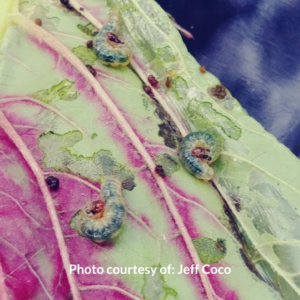
Life Cycle: holometabolous; egg, larvae, pupae, adult. 30-40 days per generation with up to 4 per year in Florida
Host Plants: wide range of crops; seen on swiss chard, lettuces, kale, amaranth, collards
Assessment: wasps usually are sufficient in handling these but multiple plants with multiple caterpillars may require treatment
Control Methods:
Cultural: considering they pupate in the soil, tilling may disrupt the life cycle
Biological: several wasps parasitize these caterpillars
Chemical: while chemical control is not recommended, there are some that can be effective
- BT Toxin
- Spinosad

Life Cycle: holometabolous overwinter as adults; multiple generations per year
Host Plants: kale, cabbage, broccoli, collards, eggplant, tomato, peppers, potatoes
Assessment: treat when the plants are young and the beetle are noticeable; full-grown plants can tolerate moderate feeding damage
Control Methods:
Sanitation: removal of crop residues, dead and decaying matter where adults can hide
Cultural: trap plants – used to lure pests away from cash crop; effective with Chinese mustard greens
companion plants – effective with dill, green onion, marigolds
Chemical: while chemical control is not recommended, there are some that can be effective; scouting is essential to catch early before numbers grow out of hand
- Neem – when nymphs hatch
- Pyrethrin spray
Biological: beneficial nematodes (Steinernema feltiae) – apply as soil application to kill larvae in ground

Life Cycle: holometabolous – egg, larva, pupa, adult; eggs laid on the ground, larvae feed on roots
Hosts Plants seem to like everything especially swiss chard, loquat, lettuces, etc.
Assessment: hand remove any that are seen
Control Methods:
It’s advisable to consider an entomopathogenic nematode to control the larvae in the soil before they hatch. I have personally done this with some degree of success. However, hand removal is highly recommended as none of our biopesticides are listed as effective. Neem might help some as will the pyrethrin.

Life Cycle: egg, larvae, 2 nymphal stages, adult; egg to adult 5-25 days; multiple generations per year; female lives 2-4 weeks and can lay several hundred eggs
Host Plants: a variety of ornamental plants; vegetables include tomatoes, squash, eggplant, and cucumber; considered a serious greenhouse pest as well
Assessment: treat on site
Control Methods: there are many natural predators available that work best
Mechanical: high impact water spray
Cultural: sanitation – remove infested plants; plant subjected to drought are more susceptible, make sure the plants are being watered correctly; some evidence that spearmint may attract predatory mites; consider intercropping
Biocontrol: many natural predators in the environment; augmentation with predatory mites can greatly reduce numbers
Chemical: while chemical control is not recommended, there are some that can be effective
- Neem
- Pyrethrin

Life Cycle: 4 stages, holometabolous; up to 100+ eggs per female; egg to adult in 70 or so days
Host Plants: papaya, mango
Assessment: treatment is usually not necessary
Control Methods: prevention of egg-laying is key; covering of fruit and removal of rotten fruits to prevent completion of the life cycle; damage is said to fluctuate between 2%- 30% of the fruit
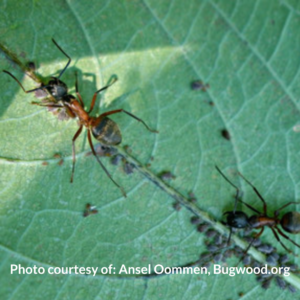
Ants have an interesting placement because they can be both a nuisance and beneficial depending on the species and the situation. Ants will most likely be present in your plots and for a variety of reasons.
Ants will sometimes aid in defending the plant from other insects that would normally feed on it, but on the other side of this, ants will tend to honeydew secreting insects such as aphids, mealybugs, and scale insects. Honeydew is a sugary, liquid waste product of sap-feeding insects. Ants will ‘farm’ aphids by defending them from predators and move them about in some cases. If there are many ants on a plant, look closely because you may have an aphid or some other sap-sucking insect problem. In this situation, it is best to try and disrupt the ants so that the beneficial insects can provide some biological control.
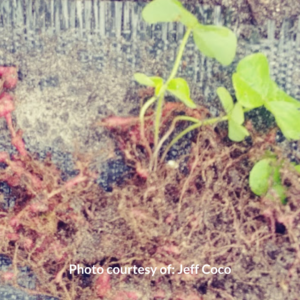
Nematodes are a nuisance that deserve their own section. Nematodes are microscopic, unsegmented roundworms that live in the soil. While many are beneficial, quite a few are plant-parasitic and can ruin your crops. There won’t be a ton of specific information here because species identification has to be done in a lab from samples collected in the field.
In Florida, there a handful of root-knot nematode species that attack various crops. To date, we have had okra, peppers, tomatoes, beets, beans and swiss chard that have shown signs of root-knot damage from nematodes. In an organic setting, root-knot nematodes will never be fully eradicated but there are a few control measures we can focus on.

In most cases, these are detritivores but they will consume plant matter and it is not uncommon to see them congregating and feeding on the stem of a plant.
In Florida, there a handful of root-knot nematode species that attack various crops. To date, we have had okra, peppers, tomatoes, beets, beans and swiss chard that have shown signs of root-knot damage from nematodes. In an organic setting, root-knot nematodes will never be fully eradicated but there are a few control measures we can focus on.
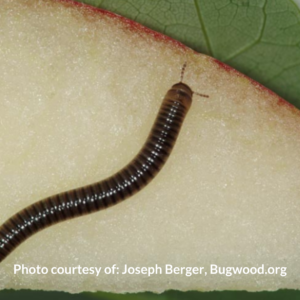
These are detritivores that will consume living plant tissues. Congregates around stems and leaves of plants and causes minor chewing damage.
Good Bugs
There are many more beneficial insects than pest insects but you may not notice them unless you are looking for them. This section will list some of the common beneficial insects we see on the plots.
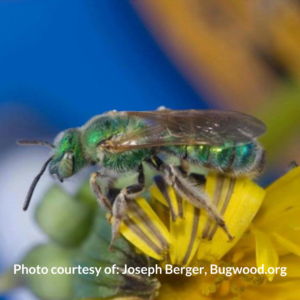
Majority are ground nesting bees, some are solitary and many are important pollinators. Increases in flower planting can aid in increasing their presence around plots.
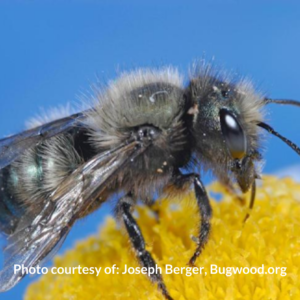
Mostly solitary with nests made in rotting wood. Some will take leaf cuttings to line their nests. Very important pollinators. They carry pollen on the underside of the abdomen.
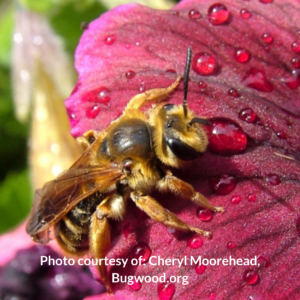
Variable appearances and sizes. Ground nesting, solitary bees. Usually the individual nests are in groups.
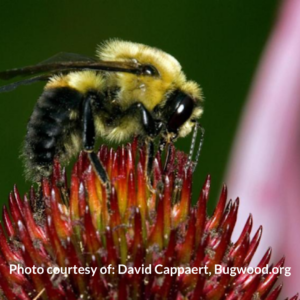
Ground dwelling social bees that are important pollinators.

This was an aphid that a wasp developed inside of. These are prominent on the plots. Look for them when you scout.
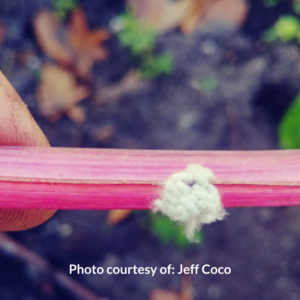
These are Braconid wasp pupae. Typical parasitoids of caterpillars and other pests.
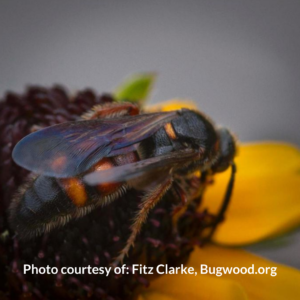
Parasitoid of ground dwelling scarab beetle larvae. Adult wasps find larvae in soil, sting and lay eggs on the grubs. Adults visit flowers for nectar and may pollinate in the process.

Paper wasps will be seen flying about and consuming nectar from various plants or seeking caterpillars to feed their larvae.
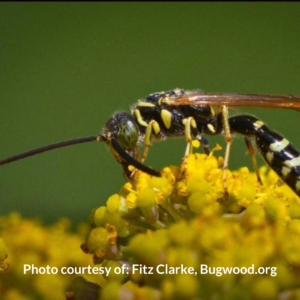
Awesome wasps that both pollinate, and are parasitoids of ground dwelling beetle larvae.
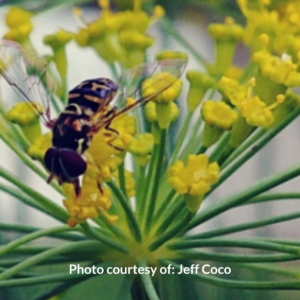
These flies are both pollinators and the larvae feed on aphids, depending on the species. High rates of aphid consumption have been seen in the field. Larvae are green and can be seen actively moving around in colonies of aphids.
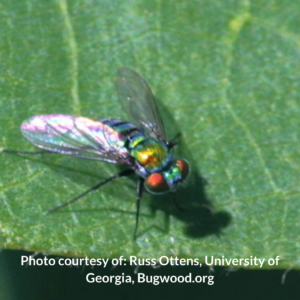
These small flies can be seen hopping around the farmlettes. In some species, both the adult and larval stages are predatory.
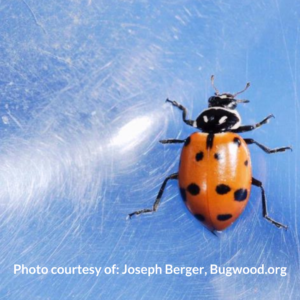
Ladybug adult beetles and their larvae feed on soft-bodied insects such as aphids and mealybugs.
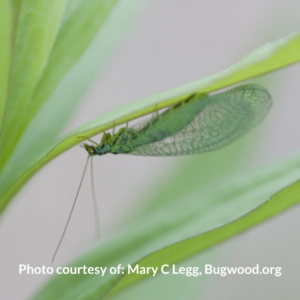
Most larvae are predatory on either soft-bodied insects and insect eggs. Some adults are predatory also.
Treatment Options
A proactive approach to pest management is the first step to sustaining control on the farmlettes. The initial step in this process is to grow healthy plants, in the right place and during the correct season. This should apply to any grower.
Prevention
At the Fleet Farming farmlettes, we focus on the entire habitat that we are growing in. To cultivate the growth of Arthropod-Mediated ecosystem services, we manipulate the environment to focus on the attraction and conservation of beneficial insects. Flowers, herbs, and other sources of nectar and shelter are planted in and around the plots to entice the visitation and (hopefully) the establishment of these beneficial insects. In relation to pest management this is called conservation biocontrol and it is a proactive tool we use on the farmlettes.
Spray Applications
In many instances we must spray or apply some type of pesticide to combat an issue that is either out of hand or trending to become a major problem. Since we grow organically all our products are OMRI (Organic Materials Review Institute) certified. As it is, we use only a handful of products.
Since these are either botanical or bacterial, there are some limitations as to when they should be sprayed. Never during the heat of the day or when its raining or expected to rain.
Some Simple Rules to Application:
- Identify what you are spraying for
- Determine when it feeds, evening or daytime
- Determine that spraying is necessary (are pest numbers high or low)
- Check levels of predators/parasitoids – they may handle the pests for you!
- Mix only what you need and measure appropriately – Biopesticide labels
- When applying, be sure to adequately cover the top and bottom of leaves and stem of plant. Complete coverage will be most effective.
Scouting will determine if it is necessary to spray. Typically if there are many predators/parasitoids present then spraying may not be necessary.
Greenhouse Management
The greenhouse is vastly different than the farms in that it is an enclosed environment. An important thing to consider is that the abiotic factors will impact the biotic factor to a higher degree.
The Fleet Farming greenhouses are simple, plastic structures that are much smaller than commercial greenhouses. However, the same rules apply and outside contaminants must be limited to control disease and insect outbreaks. Furthermore, whatever infestation occurs can be brought out to the farmlettes. Attention to detail should be a priority.
Pest Management
- Limit outside contaminates
- Utilize sticky traps, for monitoring and control
- Scout Weekly
- Consider a quarantine area to prevent outbreaks
- Whitefly
- Aphids
- Spider Mites
- Fungus Gnats
- Funguses
These are the most abundant pests that we see in the greenhouse. Keep records of pests and spray applications to manage the insects and change sticky traps monthly.
Sanitation
Sanitation in the greenhouse is of equal importance especially for fungal and bacterial infestations. These spread rapidly and must be dealt with immediately either by quarantine or spray treatments.
Important Items to Consider:
- Moisture (is the irrigation set up correctly)
- Be sure to clean spray containers after each use; mix only what you will use that day
- Clean up plant debris on shelving and floors
- Clean and disinfect greenhouses and pots/trays each season
Sources and Links For More Information
The majority of information for this manual was sourced from various state extension websites and other websites. This list is not extensive but was the most commonly used.
